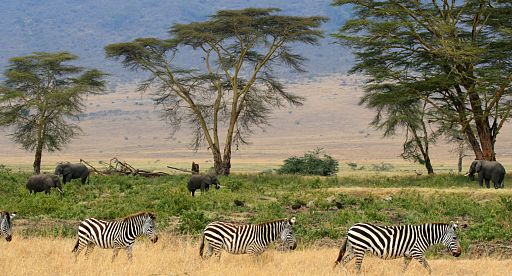By Katrina Marland
Deforestation is a common topic here on Loose Leaf.
There are just so many things that can — and are — destroying forests and trees across the globe: from human activities like development and water management to natural factors like wildfires and climate change. We lose acres upon acres of forest each year. So you would think that whenever more trees are growing, we would be happy about it … but not all new forest growth is worth celebrating.
In the far north, warming temperatures are causing the frozen tundra’s permafrost to thaw out, paving the way for new forests to grow in places where trees haven’t existed in millennia. Scientists from the University of Oxford’s Biodiversity Institute and the University of Lapland’s Arctic Center have found that in stretches of tundra along Russia’s arctic coast, new greenery is appearing much faster than anyone had anticipated. With a longer growing season, shrubs are growing to the size of trees, several feet taller than one would normally find them — all in just in the past few decades. The team’s findings completely thrashed the previously accepted notion that a warming climate would turn tundra into forests slowly as the treeline crept across the tundra over several centuries. Whether or not this is a good thing is unclear, as scientists continue to debate the issue. Some argue that the conversion of tundra to forests will result in more carbon sinks — areas that absorb more carbon than they produce. Others argue that these new tundra forests will actually result in more carbon being produced: Warming temperatures and the resultant increase in biological activity could release the carbon that has been long stored in the disappearing permafrost.
And the not-as-frozen tundra isn’t the only habit seeing new trees. Recent studies tell us that savannas and grasslands may be slowly transforming into forests too. Normally, grasslands hold almost no trees at all, while sparse trees and shrubs dot the landscape across savannas. The increase of CO2 in the atmosphere is essentially fertilizing the plants in these ecosystems, allowing some of them to grow more rapidly than usual and disturbing the ecosystem’s regular balance of flora. Scientists from Goethe University and the Biodiversity and Climate Research Centre in Germany have found that Africa’s iconic savannas — vital habitats to any number of creatures including lions and zebras — could be transformed into forests by the year 2100. In fact, a full-scale ecosystem shift could occur across the continent, changing deserts into grasslands, existing grasslands into savannas and existing savannas into forests. Such a wide-scale change could have devastating results for the species that rely on these various ecosystems.
Though we cannot predict the exact rate or details of these changes, the mere scope and speed of these massive ecosystem shifts is unsettling. If the Arctic tundra and African savanna — both landscapes known for their lack of dense tree cover — could become forests in less than a century, exactly how different will our planet look in 100 years?

